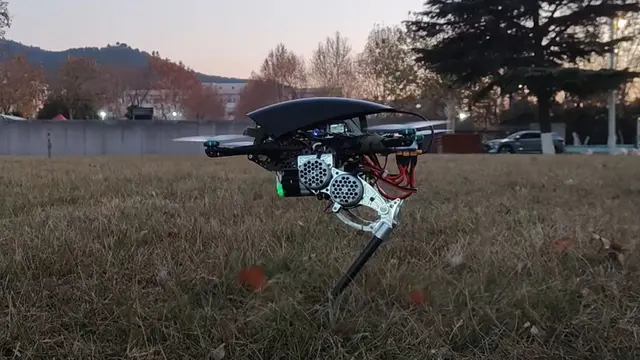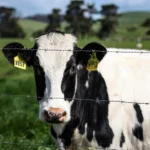- KOU-III is a bipedal robot with quadrotor assistance, designed to enhance mobility and stability.
- Inspired by ancient Chinese mythology, the robot’s name reflects its ability to “ride the wind.”
- Advanced features include a cycloidal gear reducer, carbon-fiber torso, and independent power system.
- Quadrotor assistance improves performance in standing, walking, and jumping tasks.
- This innovation could pave the way for more agile and versatile robots in the future.
Chinese researchers have developed a groundbreaking bipedal robot, KOU-III, equipped with quadrotor assistance to enhance its mobility and stability. Inspired by ancient Chinese mythology and designed to mimic the agility of ostriches, this innovative robot represents a significant leap forward in robotics technology.
A Fusion of Mythology and Modern Engineering
The robot’s name, KOU-III, is derived from Lie Yukou, a figure in ancient Chinese mythology said to have the ability to “ride the wind.” This inspiration is reflected in the robot’s design, which incorporates quadrotors to assist its movement, allowing it to achieve remarkable stability and agility.
Developed by a team at Shandong University, KOU-III features a unique knee joint actuator that replaces the traditional cantilever structure with a bridge-like design. This innovation improves rigidity and compactness, enhancing the robot’s overall performance.
Key Design Features
KOU-III’s design focuses on optimizing mobility and stability through several advanced features:
- Cycloidal Gear Reducer: Integrated into the thigh, this component enhances stability and minimizes deformation under impact.
- Carbon-Fiber Torso: Reduces weight, maximizes rotor torque, and allows for a wide range of motion (±160° pitch).
- Independent Power System: A 24V system powers the actuators and rotors, while a 5V isolated module supports the controller, ensuring efficient and independent operation.
Enhanced Mobility and Stability
The quadrotor-assisted design significantly improves KOU-III’s performance in various tasks, including standing, walking, and jumping.
- Standing Tests: With rotor assistance, the robot effectively resists external disturbances, maintaining posture with minimal pitch angle shifts (3°) and stabilizing its center of mass within 0.6 seconds.
- Walking Experiments: Rotor assistance reduces fluctuations in posture and velocity, enabling smoother motion. The robot achieves a maximum speed of 1.1 m/s, outperforming its unassisted capabilities.
- Jumping Tests: KOU-III demonstrates impressive traversal abilities, jumping onto an 18 cm step and mitigating landing impact with rotor support.
Overcoming Mobility Challenges
Legged robots, while capable of navigating diverse terrains, often struggle to match the agility of their biological counterparts. KOU-III addresses these challenges by combining advanced structural design, motion control algorithms, and auxiliary mechanisms like quadrotors.
The team’s approach builds on previous innovations, such as MIT’s miniCheetah, which reduced leg inertia by placing actuators close to the hip. However, KOU-III takes this a step further by integrating rotor assistance, inspired by natural movement strategies observed in animals.
Future Implications
The development of KOU-III highlights the potential of combining legged locomotion with aerial assistance to create highly agile and stable robots. This technology could have far-reaching applications, from search and rescue missions to exploration in challenging environments.
As robotics continues to evolve, innovations like KOU-III demonstrate the importance of drawing inspiration from both nature and mythology to push the boundaries of what machines can achieve.


